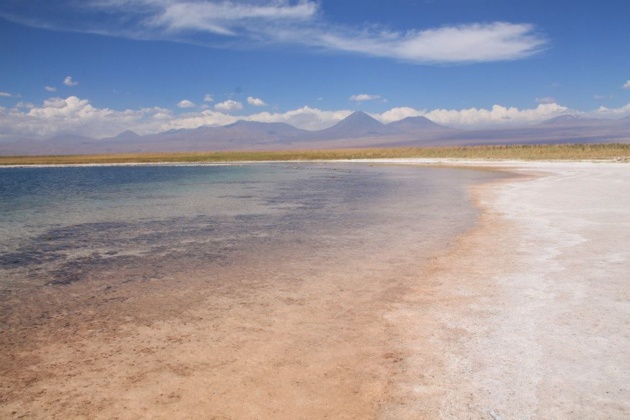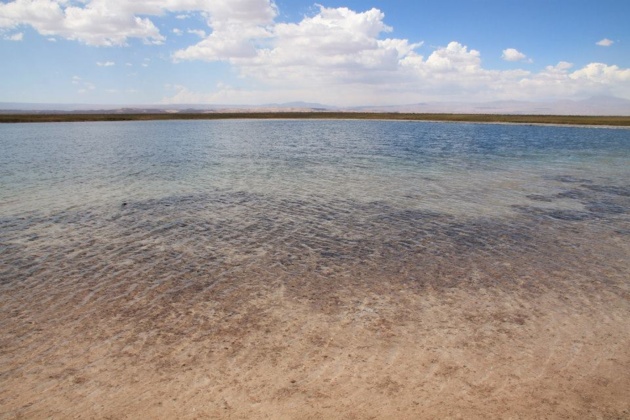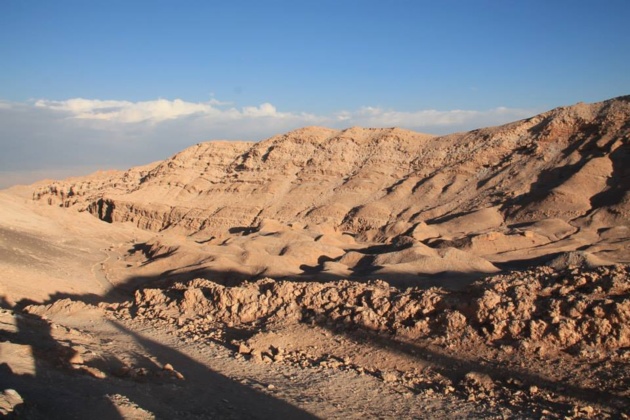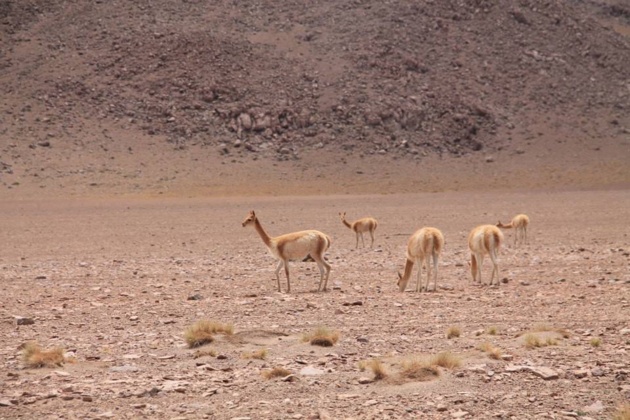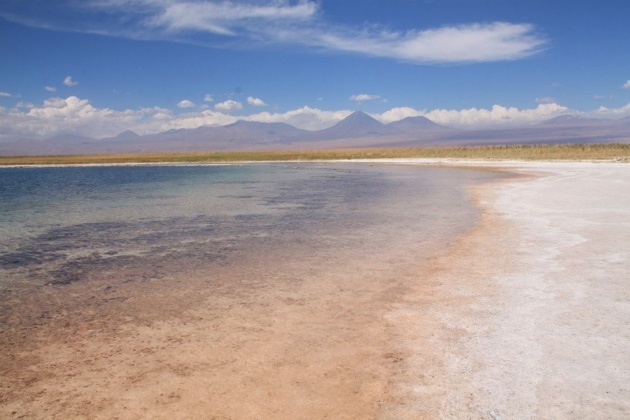
Credit Elvire Charbonnel
A twenty-four hour bus ride to the North later and there we had it : we had crossed Chile half way. Dry landscapes, orangey deserts, the heat, and a city on the seaside were all we saw before reaching the border between Chile and Bolivia. There we were, at San Pedro in Atacama, a village, small and dry, with low, narrow houses. The inhabitants looked much more typical : whereas those in the South look more like Europeans, they were smaller in stature, olive-skinned, with hair that was long and black, and more worn out clothes. Where the bus picked us up, the inhabitants were few and not very talkative. We imagined we were in one of those pseudo-villages of an American western.
However, the heart of the city had nothing to do with it. It was preserved and maintained as such to greet the tourists ; it was only made of small white houses in perfect squares, perfectly aligned. Each house was a small hotel, a restaurant, a mall, a souvenir shop or a travel agency. Very quickly, it appeared that the city only lived by and for tourists. Indeed, this is the mandatory crossing point to get through the famous Atacama Desert and to get to the other side, in Bolivia. Therefore, everything was expensive there. We decided to go into the Atacama Desert which extends over 40 500 miles², runs along the Andean mountains and consists essentially of volcanoes, with the highest point at 20 000 feet high. Dry and arid, the landscapes are nonetheless incredibly varied such that we didn’t know where to begin looking.
Let us begin with the Laguna Sajar : imagine lakes with turquoise blue water, in the middle of volcanoes and stretches of hot white sands on which it is impossible to walk barefoot. We only had to put on our swimsuit and to dive into the hot lakes, which were surprisingly salt saturated ! No need to know how to swim, you could float perfectly. While getting out, it is essential to rinse oneself with cold water, for the salt immediately creates a second layer of skin, the same way it covers the sand on the ground. A huge basin of cold water waited for us at the exit, and only the cans plunged into it allowed for us to rinse ourselves.
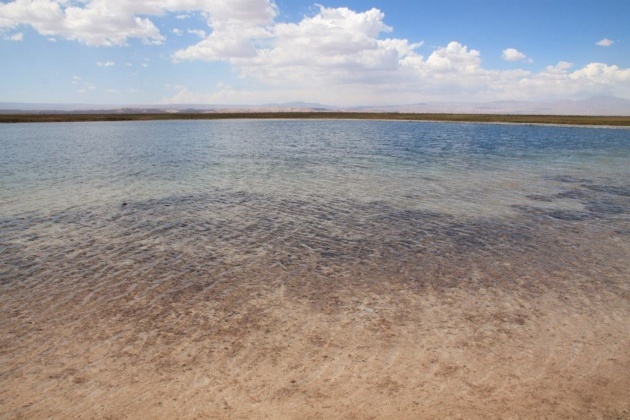
Credit Elvire Charbonnel
At the end of the day, a walk at the heart of the Luna Valley is called for : there, the sand is orangey-yellow and we have to climb up the great dunes to reach the highest point and gaze at the sunset. This is the kind of landscape which is associated with the Sahara Desert : The « classic » picture of the desert sands such as those seen for example in Tintin's adventures in The Crab with the Golden Claws. In an instant, the sunset and subsequent cold suddenly got to us. The moon comes to light up the valley, and it is at this moment that the origin of its name can be understood.
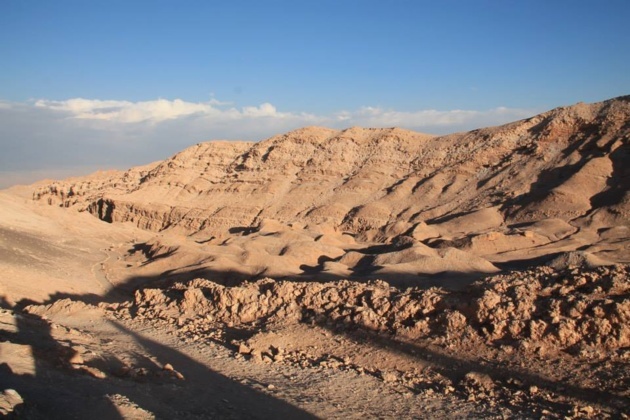
Credit Elvire Charbonnel
The next day began with a 4x4 trek. As a group of six people, joined by our Bolivian driver/guide/photographer/DJ/cook, we left for a 3-day expedition in the Atacama Desert. The objective was to go back up to the salt desert of Uyuni, driving all day long at a tremendous speed in the middle of never-ending landscapes, sometimes lunar, volcanic, or marine, and stopping to sleep in shelters which in some cases look to be abandoned. As days went by, we saw several places pass before our eyes : the Desierto Dali, overrun with volcanic stone of surrealistic shapes ; the Laguna Verde, at the foot of the Licancabur volcano and whose blue and white waters hold arsenic and copper; the sublime 23 miles² Colorada Laguna, where the striking red of the pigments of the microscopic seaweeds mixes with the pink of the countless flamingoes, with the white of the snow on the mountains tops and with the turquoise blue of the centre of the lake; the Sol de Mañana Geysers, powerful and far too odorous ; the Aguas Termales of Palques, where we could bathe in a water up to 95 degrees Fahrenheit even in full winter; the Cementerio of los Trenes, which gathered collection of old locomotives from the 17th century, and the fauna we stood alongside all day : the famous lamas, the vicunas (similar to small antelopes), rabbits with strange bodies, colored birds, and numerous flamingos.
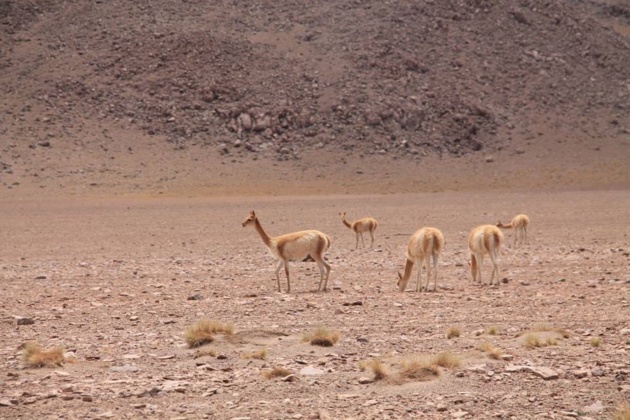
Credit Elvire Charbonnel
The run came to its end in the very middle of the Salar of Uyuni, located at the south east of Bolivia. At 12 000 feet high, this 4600 miles² white stretch constitutes the largest salt desert in the world. Under a layer of salt of 130 feet lay the greatest lithium reserves of the planet, and the salt quantity is estimated at sixty billion tons. The sight is puzzling; far away, the infinite is invisible, for the limit of the horizon merges with the white of the salt, the reflections of the water, and the clouds. The effect of perspective no longer exists. For a few moments, we were living in an enchanting world, and after this adventure, all the more difficulty would the return to reality be.














